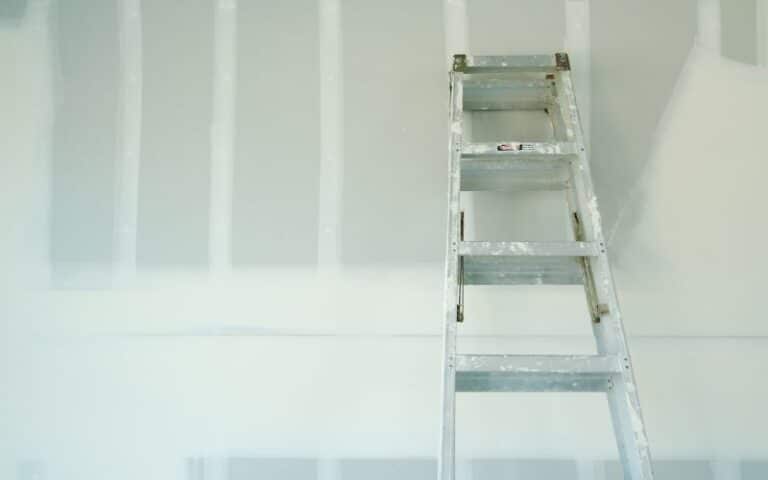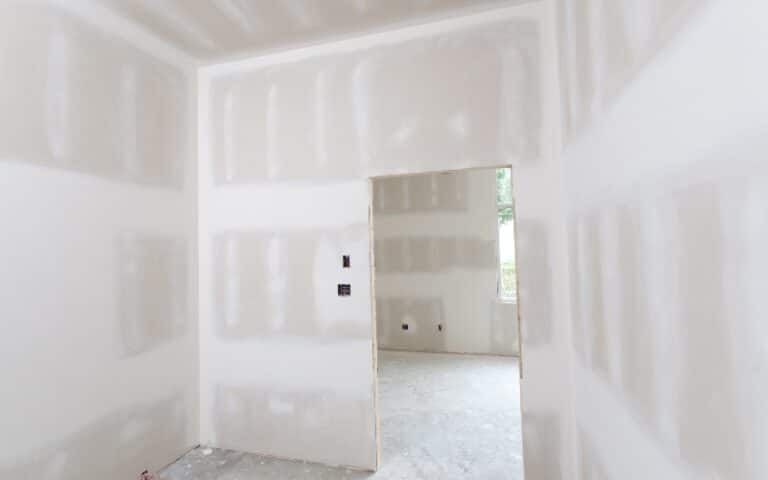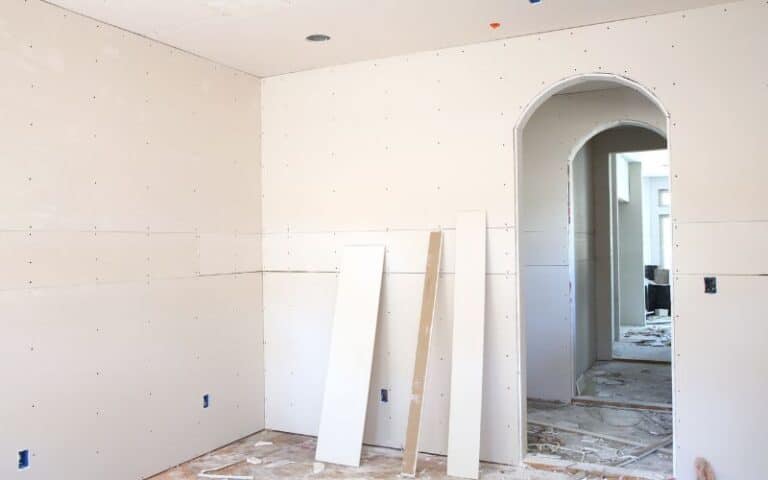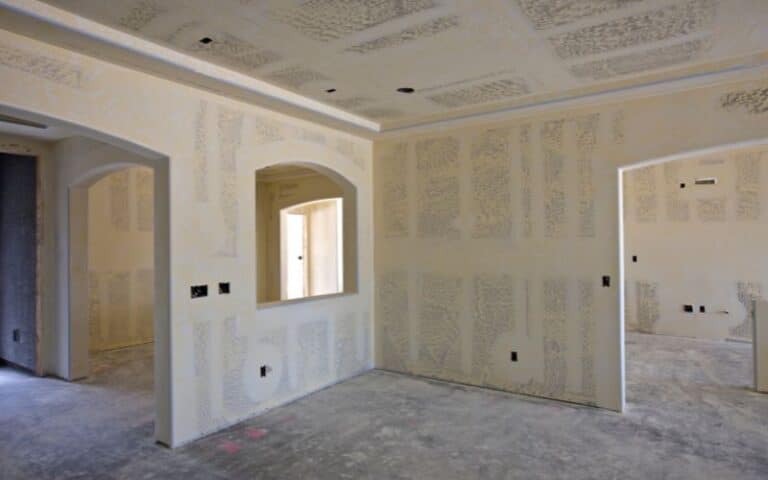Thinset consists of concrete, fine gravel, and a moisture-conserving substance. And thinset is frequently used to fasten tiles and other materials to different surfaces.
When tiling, thinset is often used to give the tiles a solid adhesive base.
However, many have questions about whether or not thinset can stick to drywall mud. So, can you fasten the thinset to drywall mud?
Yes, the thinset will stick to drywall mud. However, ensuring the surface is adequately prepared by following all manufacturers’ instructions before tiling a wall or floor is essential. Generally, thinset helps ensure that tiles remain solid by bonding well between the tile and underlying material or any other substrate surface.
In this article, I will explain everything you need to know about thinset and the best way to use thinset with drywall mud.
By the end, you will know the best techniques when using a thinset for a project. Also, you will know the best type of thinset for your project.
Ready for a Drywall Quiz?
Is It Okay to Apply Thinset Over Drywall Mud?
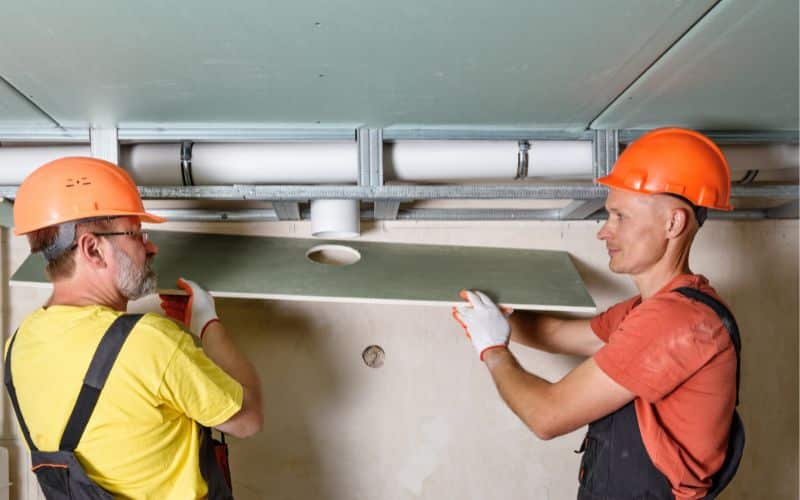
If you’re considering tiling a wall and wondering if applying thinset over drywall mud is okay, the answer is yes. It can even be beneficial in some cases.
Thinset mortar helps ensure that tiles stay secure by providing good adhesion between the tile, underlayment material, or additional covering.
It also provides additional reinforcement for walls that need extra support due to bending or movement from the weight on top of them.
Applying an intermediate layer of drywall mud first stabilizes this bonding agent.
Thereby creating a smooth, level foundation for your tiles, and eliminating many potential issues down the road, like cracking grout lines and more.
While having certain benefits associated with using both materials together, there are still things you must consider when selecting which type of thinset mortar would benefit your project most.
As well as different installation instructions depending on what base material you are using as plywood versus concrete.
Considering such considerations and following the recommended instructions when applying thinset directly over drywall mud will make the difference and help prevent complications.
Generally, while using thinset products directly on drywall projects with adequate instruction is possible, you are highly recommended to assess paramount factors before starting work.
You must consider your choice of product and all the essential safety measures required according to specific job prerequisites.
How to Prepare Drywall Mud for Thinset?
Drywall mud is essential in most construction projects.
It helps form a strong bond between surfaces, such as walls and ceilings, which can be challenging to connect without adequately prepping the area.
As tedious as it may seem to start with drywall mud, preparing your surface before thinset will help ensure you have a neatly sealed area with no crumbling particles or gaps left over.
Here’s how to go about it
Step 1
The first step when preparing drywall mud for tiling is cleaning up the room, removing debris from the space, and vacuuming away any dirt or dust on floors and other surfaces.
Hence, they are spotless before leaving them ready for tiling work afterward.
Scrape away the debris using sandpaper or taping knives. It would help to know that the thinset will adhere better to rough surfaces.
Then use tape to measure across corners and levels at floor level and around opening doors and windows to define areas where drywall rests onto existing structures.
Including metal frames if applicable.
Once you are done marking all measurements, cut off excess plywood using a saw to mark from previously taken measurements, as it will guarantee accuracy.
Step 2
The next step is to apply a primer.
Priming serves two purposes: preventing mold growth inside plasterboard due to humidity changes and giving extra hardiness when you fix the tile backer board.
Applying special primers formulated specifically helps to perform rust stabilization under such circumstances.
It would help to always go for the quality. As such, you must always get specially designed recommended brands.
Step 3
Next is to mix up the joint compound and apply it to walls and ceilings.
The key to achieving the desired results is correctly mixing common compounds. The mixture must be consistent, quite thick, and not flowing fast.
After mixing the compound, take three large buckets, ideally plastic ones, and dampen each slightly.
Set the content aside and wait for the mixture to develop a nice cream-like texture while adding a few drops of water to the desired threshold.
It would help to follow the manufacturer’s instructions regarding mixing ratios as appropriate. Also, spread evenly and overlap areas of pre-existing adhesive to create maximum adhesion between materials.
Begin laying tiles by carefully pressing down each piece while ensuring complete contact to reduce voids worth noting post-installation.
Step 4
After evenly coating the entire wall’s section, the next step is to sand away unwanted ridges left behind due to unevenness resulting from irregularities which will cause the thinset not to bind correctly.
Thus preventing tile installation altogether.
Allow your project to dry out and properly sand through to ensure you have a clean finishing touch.
Generally, sanding will bring smoothness and clear any blemishes and irregularities.
Should I Use Modified or Unmodified Thinset Over Drywall Mud?
Do you need clarification about which type of thinset is best for use over drywall mud and wondering how to choose between modified and unmodified varieties?
Well, you are in the right place. I will help you to navigate the complex maze with ease.
Please keep reading to learn all there is to know about making the right choice when selecting a thinset for your project.
You can use modified and unmodified thinset depending on what kind of flooring material it supports. However, a modified thinset offers more support once dried.
Modified thinset contains a mixture of latex additives that increase its bond strength, and as such, it can easily stick to different surfaces such as wood, metal, concrete, and even curved ones.
Also, it sets faster than a regular thinset, so you will not have any problems due to time constraints.
You can use a modified thinset as an adhesive between tiles and moist surfaces, including concrete subfloors.
On the other hand, unmodified thinset contains no polymers.
Hence they are not waterproof but are suitable on both vertical and horizontal surfaces where water will not seep through tiles onto other flooring layers below them, like hardwood floors.
When properly maintained, unmodified thinset have a bond that remains intact even when in contact with water, often due to everyday living activities like mopping and walking across wet areas.
Consider the type of project you want to run before choosing either the modified or unmodified thinset for the job.
The table below contains some of the differences between modified and unmodified thinset.
| Modified Thinset | Unmodified Thinset |
|---|---|
| Contains polymers | It does not comprise any polymer. |
| It has a shorter lifespan when exposed to moisture. | It has a longer lifespan when properly maintained. |
| Modified thinset needs air to dry. | Unmodified thinset does not need air to dry. |
Will Thinset Stick to Painted Wall?
Installing tile over existing paint or wallpaper can seem like an intriguing shortcut, but unfortunately, it’s almost always a bad idea.
Concerning details, painted walls, and bare drywall are two different surfaces requiring additional preparation before applying thinset.
When selecting materials for substrate repair, you must consider various factors, such as surface age and paint condition, before adding any adhesive products.
The thinset will stick to a painted wall with the suitable primer on your wall.
However, it is best to know that tiling is more complex than slapping some adhesive on the wall and moving on.
You must take essential steps beforehand when applying thinset to any wall.
Cleaning the application area thoroughly by removing dust and other debris from the walls is one of the preliminary steps when applying thinner.
As such, painted walls tend to be slippery, a factor you must consider.
Hence, no matter your skill level, your goal should be to ensure whatever surface lies beneath the tiles is adequately suited for them.
It would help to permanently remove paint underneath forecasted application sites before applying thinset on the walls for a more robust and stable job.
FAQs
Should I Prime Drywall Before Tiling?
Yes, it is safe to apply a primer, especially when you are tiling a new drywall. Generally, a primer gives good adhesion and makes the ground moisture and temperature resistant.
Is It Essential to Tape Drywall Joints Before Tiling?
Yes, by taping the drywall joints before tiling, you prevent the gaps from direct exposure to moisture.
Can You Tile Over Drywall in Wet Areas?
Yes, it is possible to tile over drywall in wet areas. However, it would help to know that wet surfaces attract pests and molds, making tiling over drywall in wet areas dangerous.

